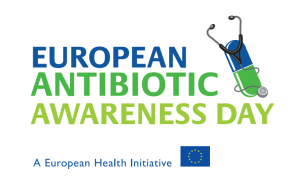Home » Community pharmacists and appropriate use of antimicrobials

Antimicrobial Stewardship aims to maximise benefit from antimicrobials, minimise harms and help to combat antimicrobial resistance, which is one of the key global public health threats. Everyone has a role to play, from patients, healthcare workers, managers and government bodies.
Community pharmacists’ role in antimicrobial stewardship and curbing the development of antimicrobial resistance should not be underestimated.
At multiple points of care, many different antimicrobial stewardship interventions can be made by community pharmacists daily.

Community pharmacists are often the first port of call for members of the public for advice or treatment for symptoms that may be caused by infection. They are in a unique position to provide triage for those that may require a doctor consultation, or indeed referral to the emergency department visit. They have a key role in reducing unnecessary antibiotic use, providing advice on self-management of symptoms with/without the help of over-the-counter remedies. Pharmacists’ interaction with the patient and providing education to reduce patients’ expectations to receive antibiotics for self-limiting infections is a key antimicrobial stewardship intervention that pharmacists perform daily.
Make yourself familiar with the recommendations on www.antibitoicprescribing.ie for the treatment of the most common infections you encounter.
Where possible, ascertain the reason for the antimicrobial and check the choice against the national antimicrobial guidelines for community settings on antibioticprescribing.ie. If there is a deviation from the guideline recommendations, a discussion with the prescriber may be warranted to ascertain the reason for their choice and this may be a chance to signpost the guidelines to the prescriber. There may be valid reasons for deviation from the guidelines, for example, previous culture results indicating resistance to guideline-recommended agents, patient intolerance to other agents, or non-response to previous antimicrobial treatment.
Prescribers are urged to choose an antibiotic from the Green (preferred antibiotic) list. The Red list of antibiotics are to be avoided, where possible, for empiric treatment of infections in community settings. The Red antibiotics generally have a higher risk of adverse effects, C. difficile infection and development of antimicrobial resistance. Some Red antibiotics (for example macrolides and quinolones), have a greater potential for drug-drug interactions. Although co-amoxiclav (a Red antibiotic), is one of the most commonly prescribed antibiotics, there are very limited indications where co-amoxiclav is recommended in the national antimicrobial guidelines for community settings for empiric treatment of infection. Note co-amoxiclav is not recommended for empiric first-line treatment for most respiratory, urinary, skin and dental infections. However, it is recommended first line for animal/human bites, facial cellulitis and some post-partum/gynaecological infections.
Make yourself familiar with the recommendations on www.antibitoicprescribing.ie for the treatment of the most common infections you encounter.
A summary of the main drug interactions with antimicrobials can be found in the ‘Drug Interactions’ section of antibioticprescribing.ie. Although this is an excellent quick-reference guide, it is not an exhaustive list of all drug-drug interactions, and alternate sources of information may be needed (for example SmPCs, BNF or Stockleys interaction checker).
Although approximately 10% patients report a penicillin allergy, only a fraction of these have a true penicillin allergy. Penicillins and related antibiotics are the preferred antibiotics for many infections based on efficacy. Patients should be encouraged to clarify the nature of the allergy with the prescriber as this can help determine what antibiotic treatment options are available, which may be particularly important for future serious infections. Cephalosporins may be administered to those with a mild penicillin allergy (e.g. mild rash only). Further information on penicillin allergy can be found in the Penicillin allergy section on antibioticprescribing.ie.
Optimal dose and dosing regimen is necessary to achieve best outcome. Under-dosing may not only mean that treatment is not effective, but exposure to suboptimal dosing also exerts selective pressure for the development of antimicrobial resistance. Refer to antibioticprescribing.ie or the SmPC for dosing guidelines for antimicrobial treatment.
The recommended dose may vary depending on the indication, so it is important to clarify the indication for antimicrobial where possible. For example, the standard adult dose of valaciclovir for the treatment of genital herpes (500mg every 12 hours) is very different to that for the treatment of shingles (1g every 8 hours).
For children, check antibiotic doses prescribed against the recommendations in the paediatric dosing section of antibioticprescribing.ie. Follow up deviances with the prescriber and signpost these guidelines to the prescriber if necessary.
In renal impairment, many antimicrobials need a dose reduction. For example, nitrofurantoin is contraindicated if eGFR <30ml/min/1.73m2. Paxlovid needs a dose reduction if eGFR <60ml/min/1.73m2. There is guidance on dosing in renal impairment on antibioticprescribing.ie, under the ‘Safe Prescribing’ section.
Giving antibiotics for the shortest effective duration is an important way to limit the development of antimicrobial resistance and adverse effects from antimicrobials, by reducing overall exposure to antimicrobials. As there is now ample evidence for five days treatment for respiratory tract infections in community settings, rather than longer courses (for example, seven days), community prescribers are urged to use five day treatment courses for respiratory tract infections (an exception is when scarlet fever is suspected). Pharmacists can support this by signposting the prescriber to the national guidelines if longer courses are prescribed for respiratory tract infections.
Another key intervention pharmacists can make is alerting the prescriber and prompting review of UTI antibiotic prophylaxis that is in excess of 6 months duration. In most cases, the risk of adverse effects and development of antimicrobial resistance (limiting future treatment options) exceeds any benefit gained from UTI antibiotic prophylaxis beyond 6 months. There is supporting guidance and an audit tool under De-prescribing UTI prophylaxis on antibioticprescribing.ie. Pharmacists can have an important role in addressing patient concerns of discontinuing prophylaxis, and can provide advice on other preventative measures.
At multiple points of care, many different antimicrobial stewardship interventions can be made by community pharmacists daily.
Community pharmacists are responsible for sourcing and supplying antimicrobials prescribed for the patient in a timely manner as with most infections, prompt treatment is needed. This can be challenging, with the ongoing medicine shortages currently being experienced, and navigating the plethora of reimbursement schemes, trying to get the best value for the patient.
Patient education on how to take prescribed antimicrobials will ensure the treatment is of maximum benefit. Some antibiotics should be taken on an empty stomach for optimal absorption into the bloodstream (for example, flucloxacillin). Patient adherence to treatment regimen is important to reduce chance of development of antimicrobial resistance and maximise treatment success. The timing of when an antibiotic is taken is also important to ensure constant amount in the bloodstream. Amoxicillin is usually dosed three times a day and should ideally be taken as close as possible to eight-hour intervals (for example 6.00am, 2.00pm, 10.00pm). It can be more challenging to adhere to a more frequent dosing regimen. In most cases, spreading the doses as best as feasible during the waking hours is reasonable for the treatment of most infections at home.
Patient education on expectation and management of adverse effects will support patients to complete their prescribed course of treatment (for example, with management of nausea) and to be alert for side effects that need immediate medical attention (for example tendonitis with fluoroquinolone class of antibiotics, like ciprofloxacin).
Vaccinations are a key measure to prevent infection and therefore reduce antibiotic use. In recent years, the community pharmacist’s role in vaccinations has expanded from encouraging patients to get their vaccinations, to providing a vaccination service that is a key part of the country’s vaccination programme.
Community pharmacists are key to providing access to safe disposal of unused antimicrobials. This is important to reduce the chance of environmental exposure to antibiotics and inappropriate sharing on unused antibiotics.
Mala Shah

Chief II Antimicrobial Pharmacist, National Quality and Patient Safety Office, HSE Community Healthcare
Highlighted Articles